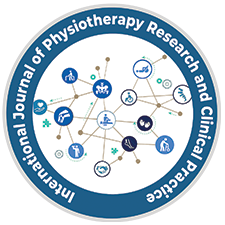


International Journal of Physiotherapy Research and Clinical Practice
DOI: 10.54839/ijprcp.v2i2.thapa
Year: 2023, Volume: 2, Issue: 2, Pages: 1-5
Original Article
D Thapa1,∗, Kalidasan1
1Krupanidhi College of Physiotherapy, Bangalore, Karnataka, India
Objectives: Stroke is a major health concern in India and is associated with risk factors such as hypertension and diabetes. Dynamic Hand Splints (DHS) and Proprioceptive Neuromuscular Facilitation (PNF) may improve hand function and reduce spasticity. The aim of this study was to evaluate the effectiveness of combining DHS and PNF on the spastic hand in patients with hemiplegic stroke. Methods: A randomised controlled trial was conducted on 40 ischaemic hemiplegic stroke patients diagnosed with spastic hands. Participants were randomly allocated into two groups: Group A (20 patients) received DHS combined with PNF, while Group B (20 patients) received PNF. The study lasted for 6 weeks, with one session per day, 5 days a week. Pre- and post-treatment assessments included the Modified Ashworth Scale for spasticity and Fugl-Meyer Assessment for motor function. Findings: The baseline demographic and clinical characteristics were similar across both groups. In Group A, MAS scores decreased from 2.85 ± 0.74 to 1.25 ± 0.78 (p < 0.001), and FMA scores increased from 8.90 ± 2.63 to 15.95 ± 2.47 (p < 0.001). In Group B, MAS improved from 2.95 ± 0.87 to 1.80 ± 0.83 (p < 0.001), and FMA scores rose from 8.50 ± 2.13 to 12.00 ± 2.92 (p < 0.001). Group A showed significantly greater improvements in both MAS (p < 0.05) and FMA (p < 0.05) than Group B. Novelty: Combining DHS with PNF is more effective than PNF alone and could be incorporated in clinical practice to reduce spasticity and improve hand function in patients with hemiplegic stroke.
Keywords: Stroke, Dynamic Hand Splint, Proprioceptive Neuromuscular Facilitation, Spasticity, Hand Function
@ 2023 Published by Krupanidhi College of Physiotherapy. This is an open-access article under the CC BY license (https://creativecommons.org/licenses/by/4.0/)
Subscribe now for latest articles and news.